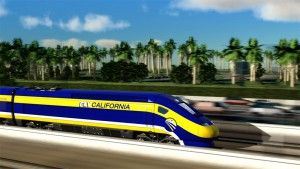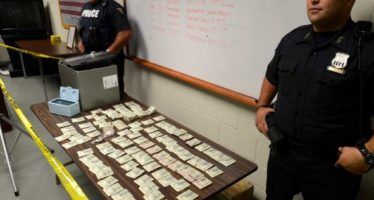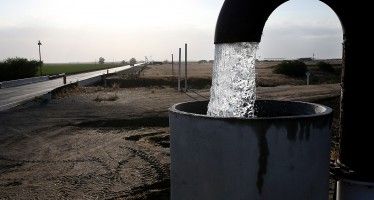Banks, firms not sold on bullet train
 As big banks hesitate to fund California’s high-speed rail project, Sacramento officials have turned back to state coffers to keep the effort going.
As big banks hesitate to fund California’s high-speed rail project, Sacramento officials have turned back to state coffers to keep the effort going.
In calculating the risk of loans that would likely exceed $35 billion, bankers want to see a greater willingness on the part of the public to bet on the train. “Even as builders clear land and begin work on viaducts near Fresno for the bullet train’s initial segment, financiers solicited by the state rail agency are calling on California to pitch in more than the $10 billion in bond funds already committed in order to give potential investors confidence that the project will become reality,” Bloomberg Business reported:
“Their responses point out a dilemma for Democratic Governor Jerry Brown and other supporters of the line: persuading reticent taxpayers to ante up more than already approved under a 2008 bond measure as support for the project declines, though private investors may stay away unless they see a bigger public buy-in.”
Banks’ reticence has been matched by the construction and engineering firms solicited to join in a partnership with the High Speed Rail Authority. Although many of the 36 firms to respond “expressed a willingness to participate in the project,” the international group gave the Authority more than it bargained for when it asked for “suggestions on how to complete the $68-billion project,” according to the Los Angeles Times. None offered to bring forward private funding, as the Sacramento Bee noted.
State investment so far has been significant, but is nowhere near the amount needed to bankroll the entire project. Along with $3.5 billion in federal matching funds, the 2008 measure greenlit some $10 billion more. “The state Legislature agreed last year to provide the first ongoing source of financial support to the project by tapping revenues from the state’s greenhouse gas emissions program in which companies buy and sell pollution credits,” the Associated Press confirmed — a divisive process that saw Gov. Jerry Brown claw away from environmentalists to his left about $750 million and 25 percent of future “cap-and-trade” revenue.
Pressing on a particularly sore spot for train backers — especially Gov. Jerry Brown, who has labored to fund construction while keeping a relatively tight hand on budgeting — Spanish and German companies warned that California’s rail program would require substantial and ongoing subsidies. “As part of the taxpayer protections written in to a voter-approved plan to provide funding to build the line, public subsidies for operation of passenger service were banned,” the Times noted. “State officials have consistently projected the train will turn a profit as soon as it begins carrying riders.”
One proposal advanced by some companies involved segmenting the train project into several much smaller and more affordable chunks, giving firms a greater willingness to bear risk and spread outlays of capital. “In the documents, many firms suggested breaking the project up into smaller contracts, typically in the $3 billion to $5 billion range. Anything much larger could scare off even the world’s largest construction and financing firms, the respondents said,” according to AP.
Meanwhile, construction plans have not slowed down. But evident shifts in the Authority’s strategy and priorities became clear as planners startled Silicon Valley with a sudden emphasis on the region. “Some Bay Area city officials were surprised by the California High Speed Rail Authority’s renewed focus on the San Francisco to San Jose segment because they believed the agency was going to start building the line in Southern California after finishing the first section in the Central Valley,” reported the San Jose Mercury News.
Initially, the sequence of events was expected to begin with the state’s midsection, move up toward the Bay, and then extend branches to Sacramento and San Diego — a span of “520 miles, shuttling travelers between San Francisco and Los Angeles in less than three hours,” according to the Bee.
Related Articles
CA poised to reform asset forfeiture by law enforcement
After a failed attempt last year, so-called asset forfeiture — the controversial nationwide practice used by cops to permanently seize property belonging
Sinking CA land to cost billions
California’s struggling infrastructure faced the daunting prospect of too little water underground and too much falling from the sky. “Four years
Recalling Honig, A Man Of 'Conviction'
JAN. 10, 2010 By K. LLOYD BILLINGSLEY Gov. Jerry Brown has appointed Bill Honig to the State Board of Education,




